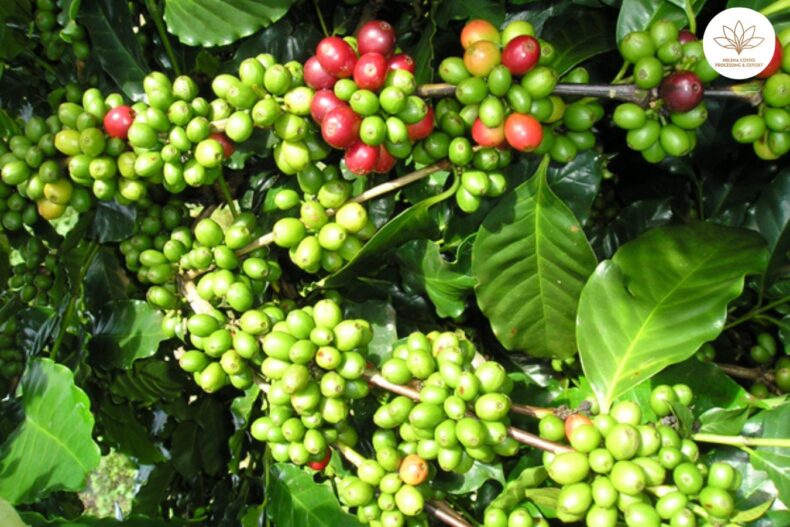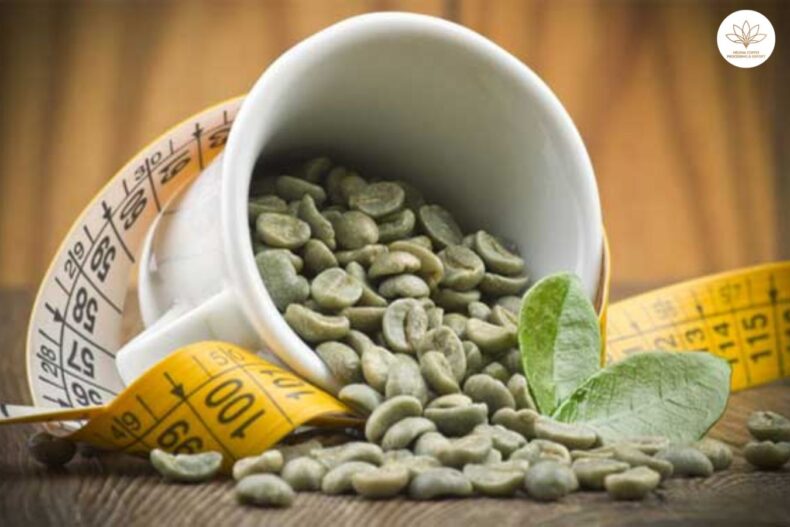
Choosing Coffee Flavor Based on Specific Criteria: Selecting the perfect coffee flavor can be a delightful yet challenging experience, given the vast array of options available in today’s coffee market. From single-origin beans to flavored blends, the choices are seemingly endless. To help you navigate the world of coffee and find the ideal flavor that suits your unique tastes and preferences, we’ve put together this guide on choosing coffee flavors based on specific criteria.
In this article, we will explore factors such as roast level, origin, processing method, and taste preferences to make the selection process a breeze, allowing you to enjoy a tailor-made coffee experience like never before.
Coffee Flavor By Origin
The origin of coffee beans plays a significant role in the flavor profile of your cup of joe. Each coffee-growing region has unique characteristics that influence the taste of the beans. Here, we will discuss some of the most popular coffee-producing countries and the general flavor profiles associated with their beans.
- Ethiopia: Often considered the birthplace of coffee, Ethiopian beans are known for their fruity and floral flavors. They typically exhibit bright acidity with berries, citrus, and jasmine notes.
- Colombia: Colombian coffee is renowned for its balanced and smooth taste. The beans often possess medium acidity and body, with flavors ranging from chocolate and caramel to hints of fruit, such as green apple or red berries.
- Brazil: As the world’s largest coffee producer, Brazil offers various flavor profiles. Brazilian beans are generally known for their nutty and chocolatey flavors, low acidity, and medium to full body.
- Guatemala: Guatemalan coffee is characterized by its bright acidity, medium to full body, and complex flavors. Expect notes of chocolate, caramel, and a variety of fruits, such as apricots or blackberries, depending on the region.
- Kenya: Kenyan coffee is prized for its bold and vibrant flavors. These beans often have high acidity, full body, and intense fruity or wine-like notes, such as black currant or grapefruit.
- Sumatra (Indonesia): Sumatran beans are known for their earthy and herbal flavors, low acidity, and a full body. The taste profile often includes dark chocolate, cedar, and spices notes.
- Costa Rica: Costa Rican coffee is famous for its bright acidity, medium body, and well-rounded flavors. The beans often exhibit fruity and citrusy notes, such as orange or pineapple, with hints of chocolate or caramel.
- Yemen: Yemeni coffee is unique and distinctive, offering complex flavors with medium acidity and body. The beans may showcase notes of dried fruit, such as raisins or dates, and spices like cinnamon or cardamom.
- Vietnam is the world’s second-largest coffee producer, primarily known for its Robusta beans, which comprise around 95% of the country’s production. Vietnamese coffee offers unique flavors and characteristics that set it apart from other coffee-growing regions.
- Robusta Beans: Vietnamese Robusta beans are characterized by their strong, bold, and often bitter taste. They have higher caffeine content and lower acidity compared to Arabica beans. The flavor profile typically includes earthy, nutty, and dark chocolate notes. These beans are often used in espresso blends and traditional Vietnamese iced coffee, which is brewed using a phin filter and sweetened with condensed milk.
- Arabica Beans: Although Arabica production in Vietnam is relatively small, the country has gained recognition for its high-quality Arabica beans, particularly from the Central Highlands region. Vietnamese Arabica beans usually exhibit mild acidity, medium body, and subtle fruity or floral notes, such as berries or jasmine.
- Specialty Beans: In recent years, Vietnam has also started to produce specialty coffee beans, such as the rare and sought-after Catimor, Bourbon, and Typica varieties. These beans often showcase more complex and nuanced flavors, including bright acidity, fruity or floral notes, and hints of chocolate or caramel.
As the Vietnamese coffee industry continues to grow and evolve, coffee enthusiasts can expect to see an increasing diversity of flavors and quality in this vibrant coffee-producing country.
While these general flavor profiles can guide you in selecting a coffee by origin, it’s essential to remember that there can be variations within each country due to factors like altitude, soil, and processing methods. Sampling beans from different regions will allow you to understand better and appreciate the diverse world of coffee flavors.
Coffee Flavor By Ingredients
The raw material is – the motherland where the coffee trees bloom is the most critical factor in forming a unique flavor. Experts often refer to “pure coffee” as coffee brewed from beans originating in a single country, preferably from a cooperative or plantation.
If a purebred variety is top quality and adequately roasted, you will have coffee with an authentic taste that no finesse can achieve. The flavor of coffee reflects the unique, organic qualities of the land in which it grows; whether it has been watered under cold rain or sunbathing in the warm air and matured in harsh sunlight or shady, each retains its distinct, and many have its character.
Therefore, farmers must understand the motherland to improve the soil or choose suitable farming areas for coffee. However, improving soil quality is tricky because it relates to the soil’s natural nutrients. Therefore, farmers often must experiment on different soil types and evaluate the results before starting mass farming.
The coffee belt has four central coffee regions, with many prominent localities and cooperatives suitable for growing coffee and producing high-quality aromatic goods. Africa and South & Central America are famous for their excellent coffee beans in the international coffee arena. Besides, Asia, the Caribbean, and North America are no less competitive with various coffees.
Coffee Flavor By Variety And Type
Coffee taste is also different due to variety and stuff. The five coffee varieties identified today in the research world are Arabica Bourbon, Arabica Typica, Arabica Ethiopia Heirloom, Liberica – Excelsa, and Robusta. Arabica coffee varieties are highly appreciated and preferred when they offer a rich, unique, interesting flavor and outstanding caffeine quality.
A coffee tree can only be harvested after four years of cultivation. Trees can be exploited for 10-20 years, depending on conditions and varieties; however, replacing and planting old trees is necessary. This problem creates many difficulties for people during the four years of care and re-cultivation.
However, for good productivity and quality, this process is required. After replanting, the coffee flavor will sometimes change. Today, many scientists and farmers have begun to research and transplant to create better coffee varieties with good environmental adaptation and stable quality.
Coffee Flavor Through By Processing Method
After nature chooses its destiny, the processing and preservation method will determine the final value to the coffee drinker. Often farmers will divide the amount of coffee harvested by lots (i.e., batches) based on the cultivated land, choosing to process according to different methods (wash, natural, honey) depending on the purpose and taste. Wishes of preprocessors at primary processing stations.
With three main processing methods: wet, dry (natural), and semi-wet (honey), coffee is supported to enhance flavor, clearly portraying the hidden beauty. Coffee that undergoes wet processing often produces beans with a distinct and uniform flavor and requires a more intense roasting profile. Dry processing leaves less acid in the coffee, but it takes longer. Coffee grown in dryland is usually processed by natural methods.
Coffee Flavor Through Storage Conditions
Preservation is the final condition, besides the art of brewing, which helps preserve coffee beans’ flavor. In recent years, all coffee has been wrapped in burlap sacks and transported by water in containers. Roasters and importers often do cupping and sample approval of coffees before shipping. Many roasters conduct direct trade with farmers, sharing assessment information about green coffee and cupping with the farm to ensure freshness and quality.
Coffee beans when freshly processed, when transported, docked, before roasting, in each stage, the taste of coffee also changes a lot; Similar to coffee after roasting, over time: freshly roasted, burned for one week, one month, three months, the taste is also different.
As mentioned many times, after resting, and reducing “inhibition” by the impact of the environment, coffee will have a more stable and delicate taste. Besides, storage conditions also have a significant effect on the taste of coffee.
Many roasters even have to build a storage area with strictly controlled temperature and humidity for each type of coffee to keep the inherent flavor and limit the damage to coffee products.
>>> Coffee flavor selection based on a criterion – Helena Coffee Processing & Export


